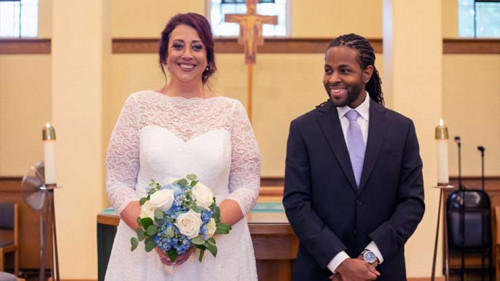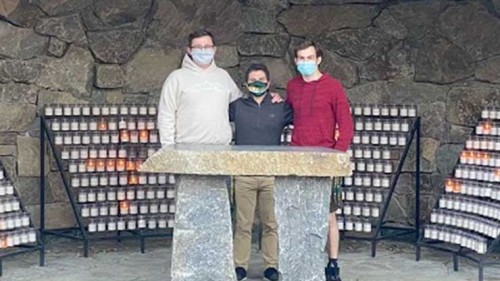
By Elise Fernandez '13
This semester, Siena College’s theatre group Stage III presented “The Children’s Hour,” written by Lillian Hellman in 1934. The Siena production was directed by Kristen Van Ginhoven. The play is a drama set in an all-girls boarding school led by two women. A mischievous student named Mary Tilford creates a lie that the two headmistresses are having a lesbian relationship. The accusation causes tremendous turmoil and destroys their lives.
Ashley Broady ’13, who plays headmistresses Martha Dobie, said she hopes Siena students take away the idea that acquiring equal rights for the Lesbian Gay Bisexual Transgender (LGBT) community has been a lengthy struggle and something that can still be developed further. “Although our show represented some extreme results from inequality, I hope students have a stronger understanding of what issues the LGBT community faces and how our generation can continue the fight for equality and understanding for all,” Broady said.
Kristen Bossio, who plays headmistress Karen Wright said, “I hope that Siena students can see this play and think about the effects that their negative words can have.”
“The Children’s Hour” Director Kristen van Ginhoven is also Artistic Director and Co-founder of Women’s Action Movement (WAM) Theatre. According to its website, WAM Theatre is a theatre company based in the Berkshires of Massachusetts and New York’s Capital Region. It was launched in 2010 with the goal of using theatre to take action for women and girls.
“The Children’s Hour,” according to van Ginhoven, tells the story about the consequences of a lie. “It is important to think about what motivates us to lie -- in the case of the play, it's Mary's homesickness -- and to think about other options because the consequences of lying are just not worth it,” van Ginhoven said.
When the play was first created, it was banned and only performed in private, underground clubs. The setting was chosen to make a statement and gave the audience the feeling of secrecy. “The play was written during the Modernist time period and edits were then made in the 50's during post modernism,” said van Gihoven. “The framework for the whole play, setting it in the 'private club', was a technique we used that was Modernist.”
Scene and setting choices were made in Siena’s version of “The Children’s Hour” to create a message of the societal issues from both the past and present. The first half of the play was set during the 1930’s. After intermission, updated furnishings, clothing and technology were used to portray the present day.
“Another audience intention was to remind people that, unfortunately, the societal stigma attached to being part of the LGBT community still exists,” said van Gihoven. “By switching the time periods we were able to make a stronger statement about the continuing importance of this issue.”
Even though it was written nearly 80 years ago, “The Children’s Hour” remains a topical, timely play that sparks thought and discussion among its performers and their audiences.

